Lanzarote, the fourth-largest of Spain’s Canary Islands, is much more than a sangria & sand flop for sun-starved Northern Europeans. This island has a rich artistic heritage, a smattering of colonial towns and a sensational volcanic landscape.
Make the most of your time there with my guide on spending one week in Lanzarote. It includes maps plus tips on where to stay and how to get around.
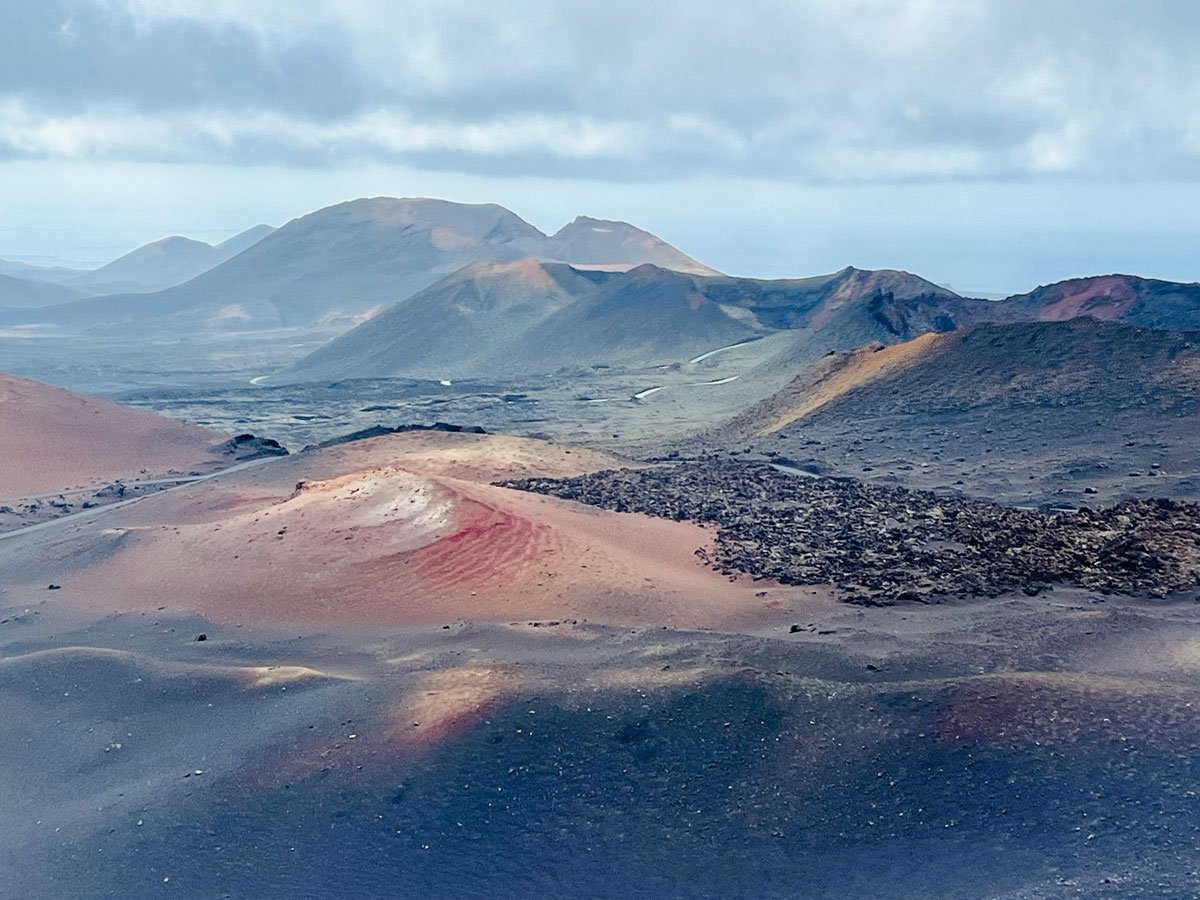
Some articles on this website contain affiliate links. This means that I may earn a small commission if you make a purchase through these links. As an Amazon Associate, I earn from qualifying purchases. Read the full disclosure here.
Top ten places to visit in Lanzarote
- Timanfaya National Park
- Teguise
- Arrecife
- Famara
- Yaiza
- La Geria
- Fundación César Manrique
- Jardín de Cactus
- Jameos del Agua
- Cueva de Los Verdes
Where to stay
Recommended excursions
How I Spent a Week in Lanzarote
I visited Lanzarote as a solo traveller and used public transport to visit most of the places in this article, basing myself in Costa Teguise.
I took this full-day tour to visit Timanfaya National Park, Jameos del Agua, Cueva de Los Verdes and Mirador del Rio. To visit the vineyards of La Geria, I joined a tour with Wine Tours Lanzarote.
Best Places to Visit in Lanzarote
If you find it helpful to map it out, here’s a map showing the locations of these fabulous Lanzarote landmarks.
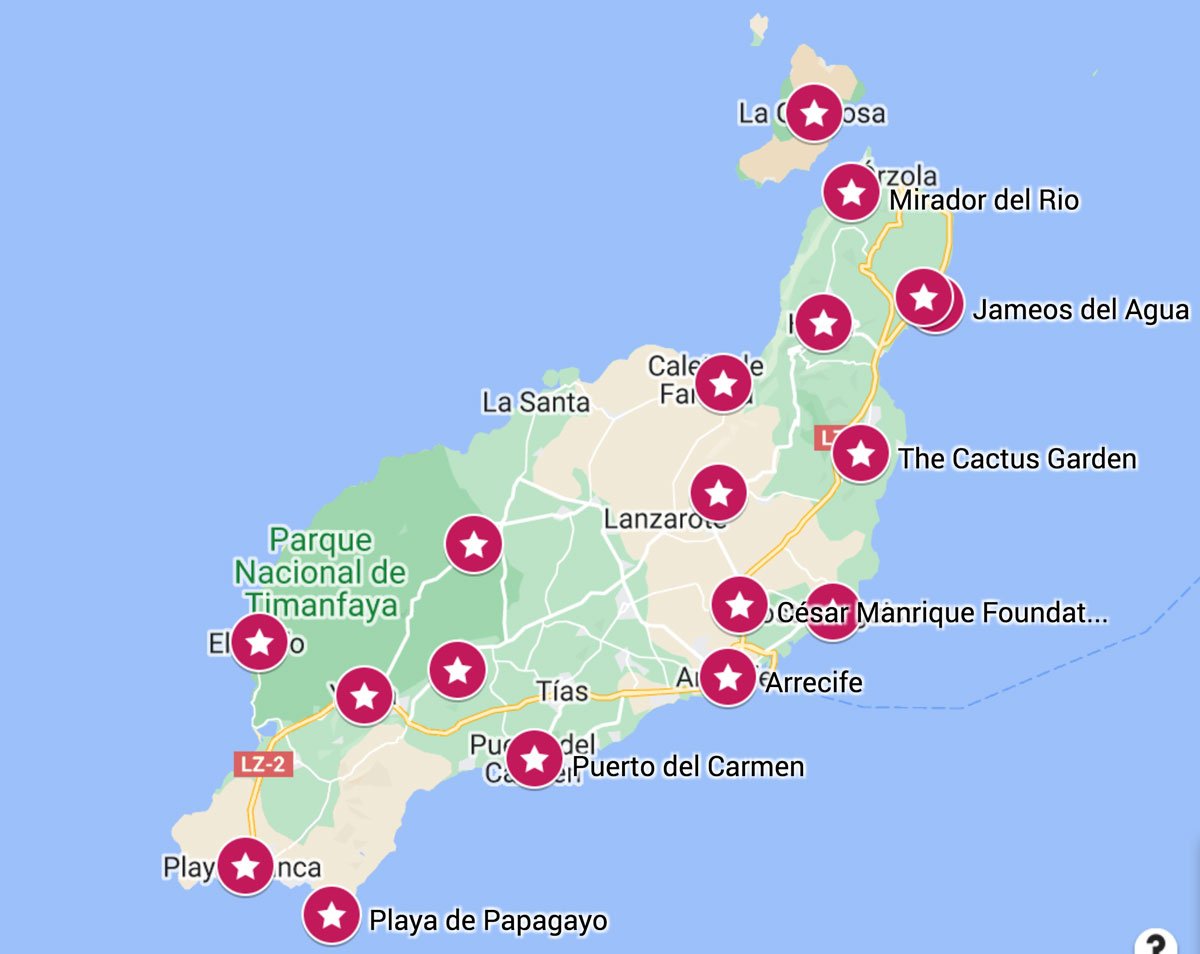
The island has much more to offer than beach resorts and bars.
Lanzarote has other-worldly landscapes, windswept surfer beaches and charming colonial towns. And thanks to the legacy of César Manrique, its most famous son, it has a handful of quirky architectural delights up its sleeve.
1. Arrecife
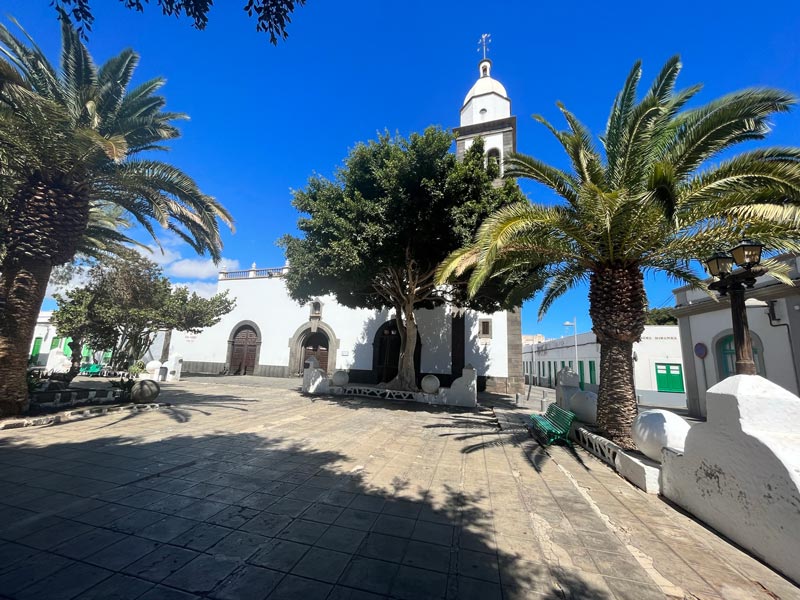
Don’t you love it when a city exceeds your expectations? For me, Arrecife, Lanzarote’s capital, was one of those cities.
There are plenty of things to do in Arrecife, it has a long history and there is no better place on Lanzarote to experience a real slice of island life. If you want a holiday away from Lanzarote’s resorts, with the bonus of an excellent beach, there’s a lot to be said for making this your base.
Things to see in Arrecife
- Playa del Reducto – Arrecife’s golden sand beach with calm, clear waters
- Seafront promenade with a charming Quiosco de la Música
- Castillo de San Gabriel – a sturdy 16th Century fortress that now houses the Museo de Historia de Arrecife
- Charco de San Ginés – a pretty tidal lagoon that is lined with restaurants
- San Ginés Church and Plaza de las Palmas – a 17th Century church located in an attractive square that is lined with colonial buildings and filled with the sound of birdsong.
2. Teguise
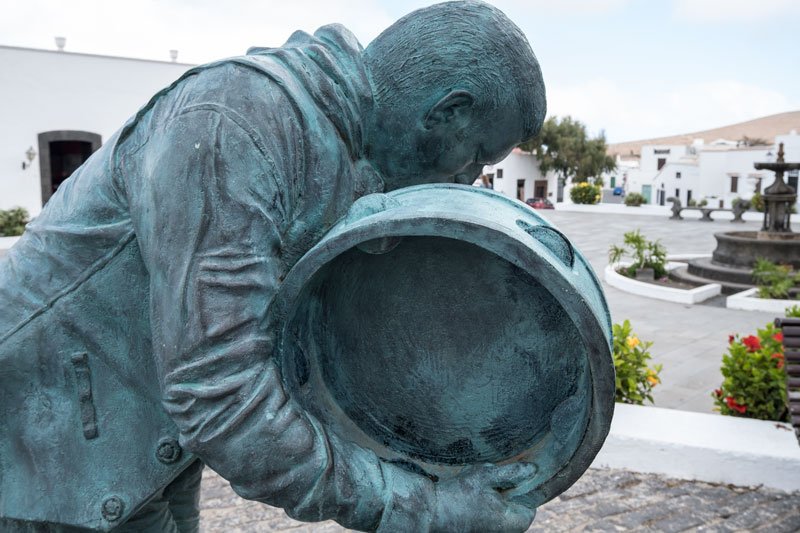
Located in the centre of the island, Teguise was the first colonial capital in the world. With its attractive buildings, squares and a handful of excellent churches and museums, it’s a must-see in Lanzarote, even if you are just here for a week.
Things to see in Teguise
- Palacio Spinola – built for an aristocratic family in the 18th Century, this mansion now houses the Casa-Museo del Timple, a surprisingly fascinating museum dedicated to the island’s traditional five-stringed instrument.
- Iglesia de Nuestra Señora de Guadalupe – facing Palacio Spinola is this weird hybrid of a church
- Convento de Santo Domingo – founded by the Dominicans in 1698, this is now an art centre and hosts temporary exhibitions.
- Convento de San Francisco – this 16th Century church has some interesting paintings dating from the 13th Century
- Castillo de Santa Bárbara – crowning an extinct volcano on the outskirts of town, this fortress was built to protect the colonial capital from pirates and profiteers. At the time of writing (December 2022) it is closed for refurbishment.
3. Yaiza
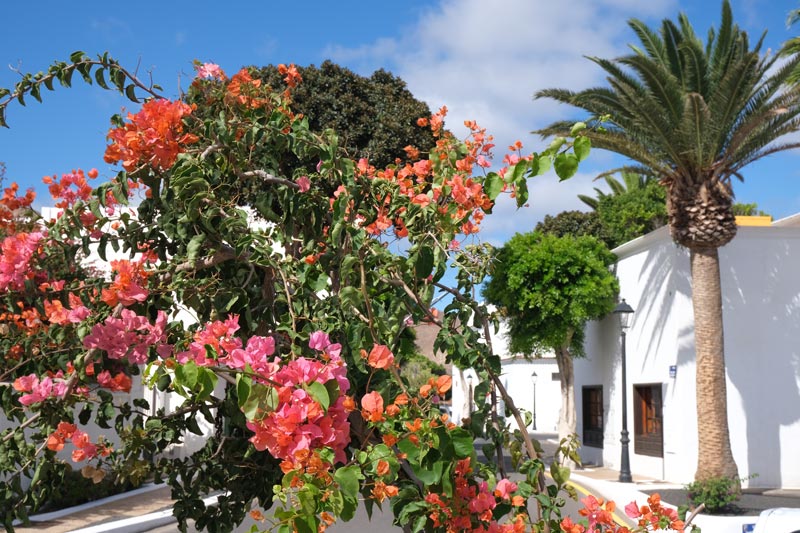
Yaiza’s proudly-held reputation as the prettiest village in Lanzarote is well-deserved.
Its palm-lined streets sit alongside typical Canarian-style buildings. Blood-red geraniums decorate green balconies and splashes of vibrant bougainvillaea droop over whitewashed walls.
In the centre of town is the lovely church of Nuestra Señora de los Remedios. It has columns built from volcanic stone, a wooden ceiling and simple arched windows of red, blue and clear glass.
4. Fundación César Manrique
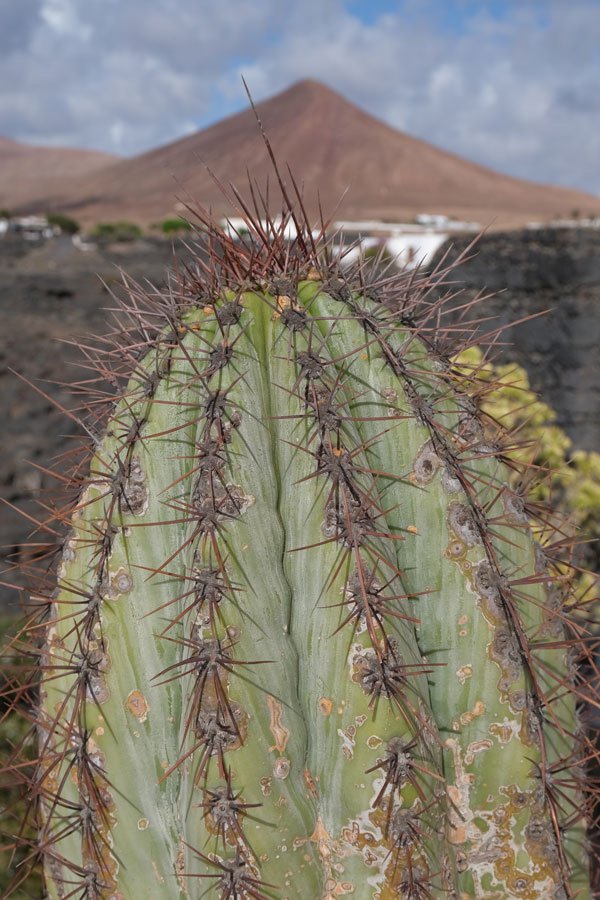
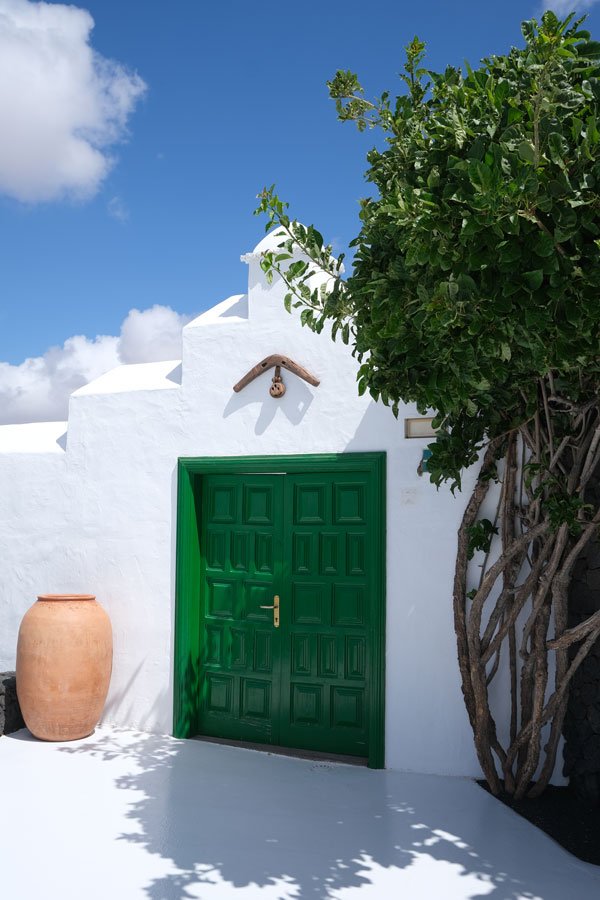
The work and life of César Manrique pervade Lanzarote. Born in Arrecife in 1919, Manrique was a painter, sculptor, architect and artist and he used the island as an environmental canvas.
On the outskirts of Tahiche is the wonderful Fundación César Manrique, one of the most interesting places to visit in Lanzarote. The former home of this joyful, hedonistic man has been transformed into a celebration of his life and work through sculpture, paintings and archive photos and video.
From the house’s huge windows, there are views over a landscape of volcanic cones and molten lava. There are volcanic bubbles with trees straining to reach the light and a subterranean garden with a pool.
In the peaceful enclosed garden at the end of the tour, you’ll find a huge abstract mural, which is one of Lanzarote’s famous sights.
5. Jardín de Cactus (Cactus Garden)
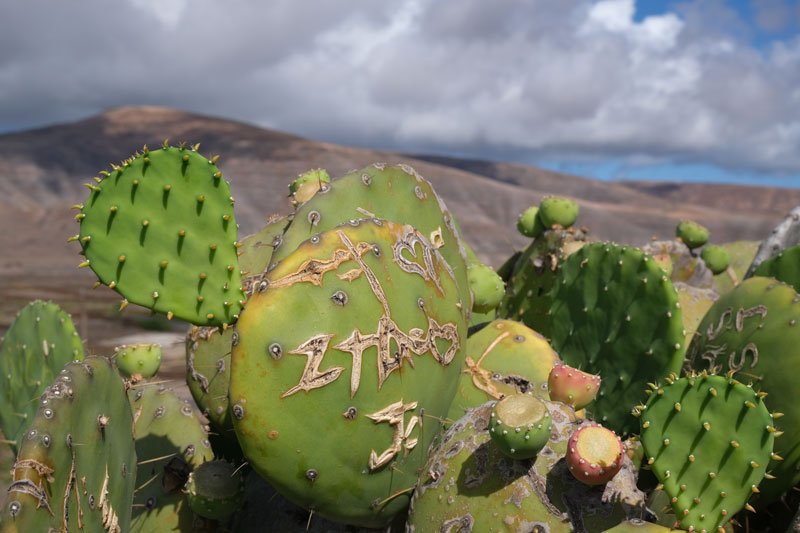
Set in a volcanic crater, this terraced garden designed by César Manrique, is crowned by a small white windmill.
There are more cacti than you can shake a stick at, from tall and phallic ones to others that look like small, furry animals. The garden is home to around 500 species from across the globe, and the coffee shop sells cactus-containing treats if you are in the mood.
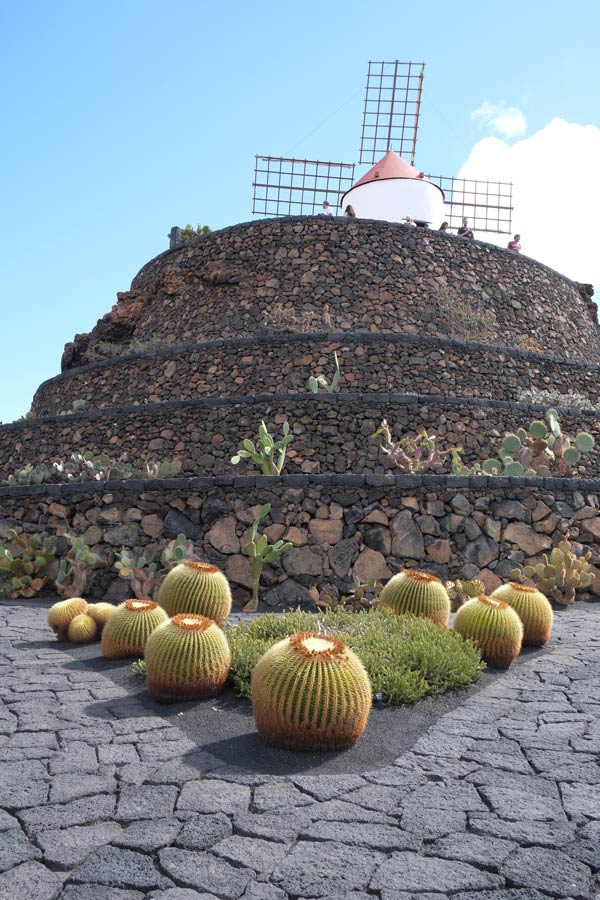
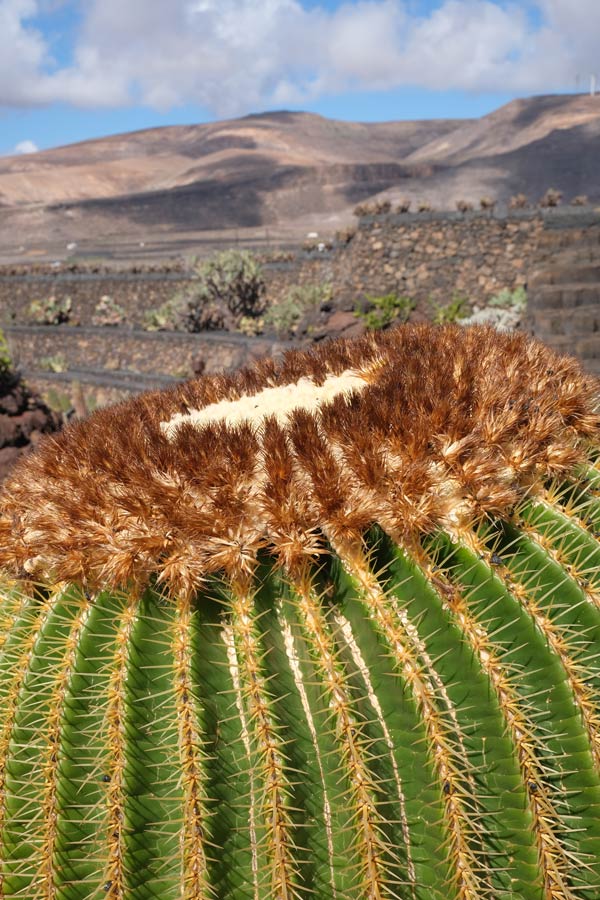
Don’t miss the artwork on the external walls of the toilets. These Manrique designs are as much of a crowd-puller as the prickly plants themselves.
6. Jameos del Agua
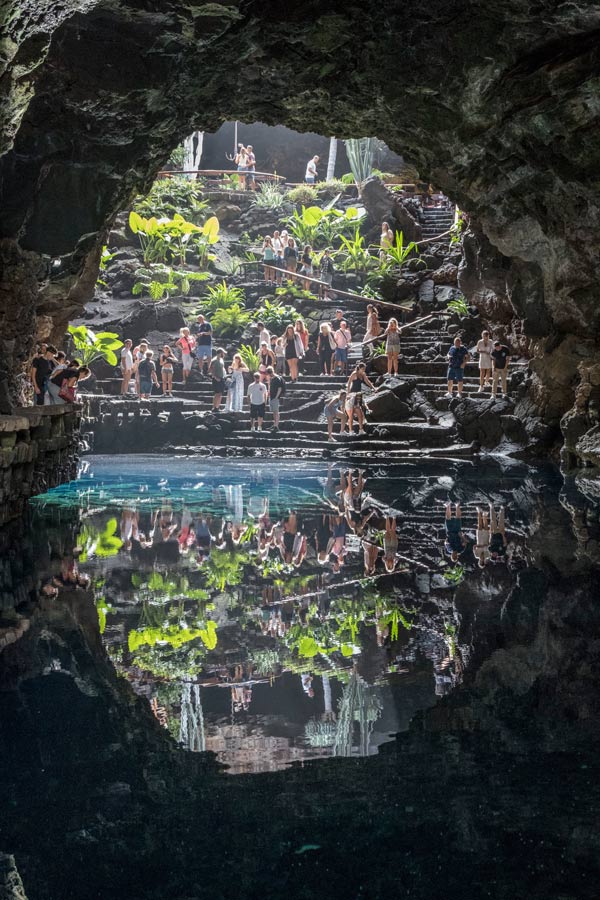
Manrique created this extraordinary subterranean world out of a volcanic tunnel system that runs from Montaña de Corona to the Atlantic Ocean. Jameo is the name given to the cavity that is produced when the roof of the volcanic tunnel collapses.
The downstairs lake is home to a unique species of crab (Munidposis polymorpha), blind, white and minus a shell. On the far side of the lake, landscaped terraces take you back to ground level
7. Mirador del Rio
In typical fashion, César Manrique transformed this disused military base into a lookout point with views over La Graciosa and the smaller islands of Montaña Clara and Alegranza.
But you’ll just have to take the guide’s word on how sensational these views are. On the day I visited there was a complete white-out.
8. Haria
Known as the “Valley of a Thousand Palms”, Haria is located in the greenest part of Lanzarote. Whilst a thousand may be pushing it, there are certainly a lot of palm trees.
Picturesque Haria became César Manrique’s home in his later years, now Casa-Museo César Manrique. Little has changed since he was killed in a car accident in 1992, and the house is filled with his personal belongings.
9. Timanfaya National Park (Parque Nacional de Timanfaya)
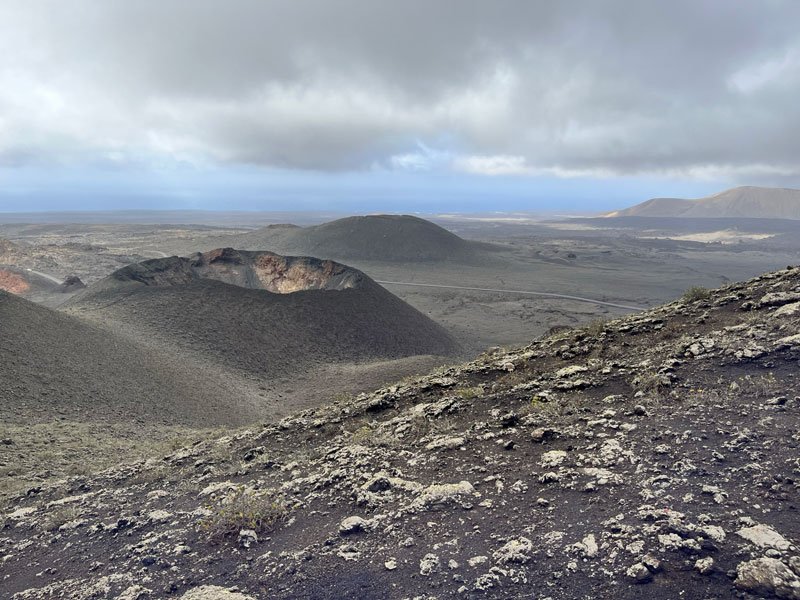
If there is one landmark that defines Lanzarote it is Timanfaya National Park. It has been designated a biosphere reserve by UNESCO and is a must-see for any first-time visitor to the island.
Covering a quarter of Lanzarote, this spectacular volcanic landscape was created by over six years of near-continuous volcanic eruptions that took place between 1730 and 1736. The result is a Mars-like landscape like no other you may have seen before.
There is no public bus to Timanfaya. If you do not have a rental car, the best way of visiting the park is on a day tour (I did this one which included the entrance fee).
You can only explore the park on a coach tour. Getting off the bus and walking through the lava fields are not permitted.
10. El Golfo (Laguna de los Clicos)
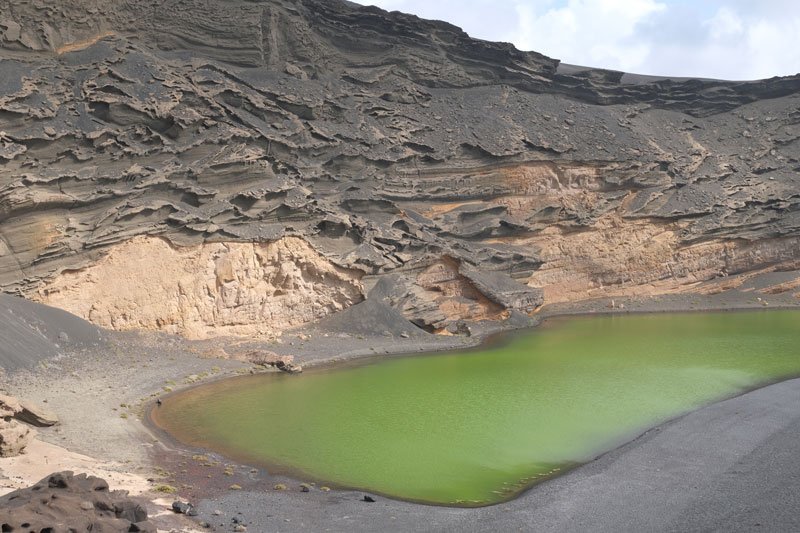
Along a path from the tiny coastal village of El Golfo is one of Lanzarote’s most famous sights, Charco de Los Clicos or Green Lagoon. The intense colour of this lagoon is due to the concentration of Ruppia Maritima, a type of algal phytoplankton, in the water.
Although this is a hugely popular attraction, I confess that I was a little underwhelmed.
11. La Geria wine valley
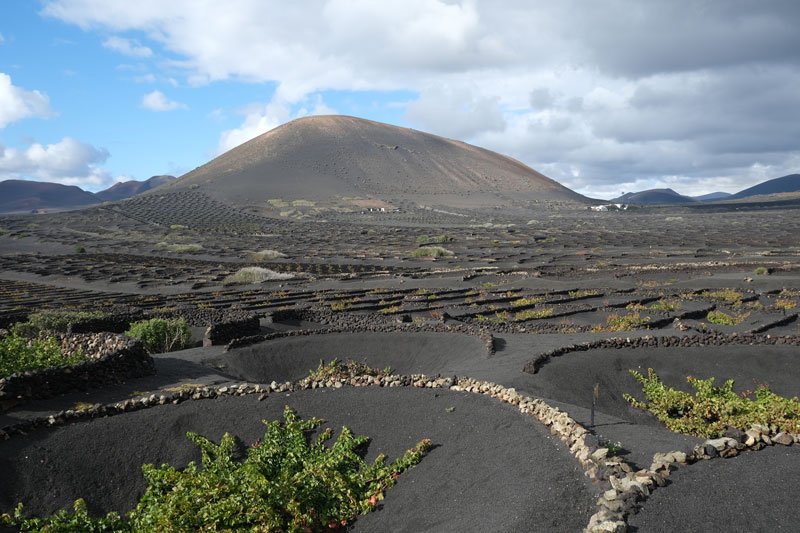
Did you know that Lanzarote has a thriving wine industry? Probably not, but that’s because they keep their wine for themselves.
La Geria, a protected area of about 20 square miles, is Lanzarote’s main wine-growing region.
Malvasia Volcanica is used to make 75% of the wine on the island. The grapes are cultivated in a semi-circular pit dug into the volcanic ash, surrounded by a low stone wall that offers protection from the trade winds.
Harvesting starts towards the end of July – the earliest in Europe – and all picking is done by hand. It must be back-breaking work.
To learn more about viniculture on Lanzarote – and to sample the island’s wine – join a half-day tour. I did the Wine and Vineyard Walk with Wine Tours Lanzarote, which was fun and informative in equal measure.
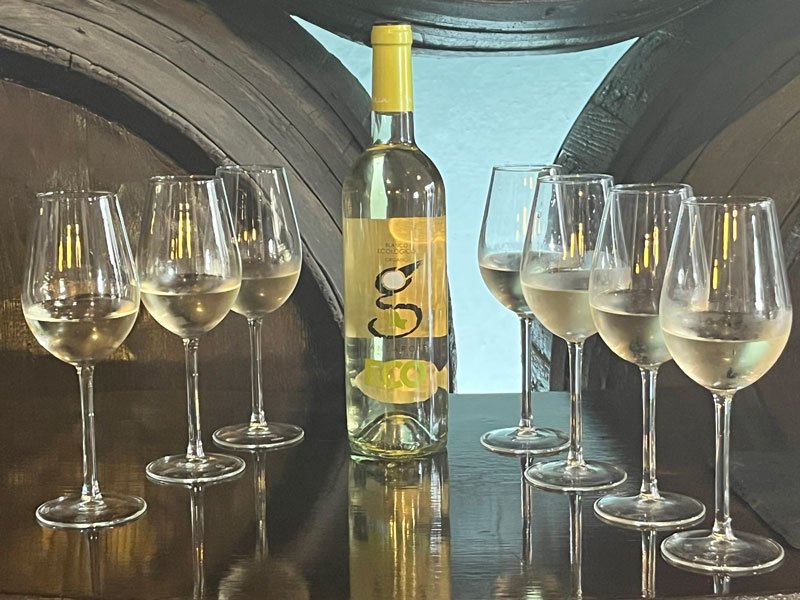
12. Cueva de Los Verdes
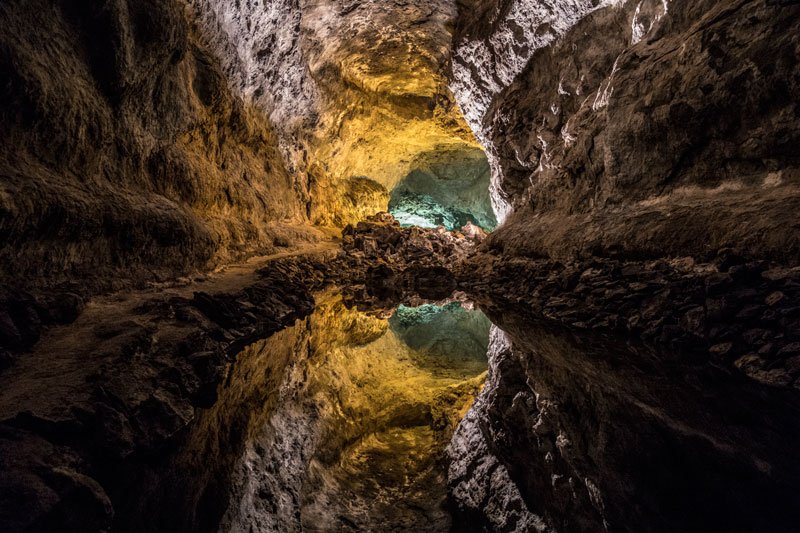
Literally “Cave of the Greens”, the name refers not to the colour of the rocks but to the family who used to tend their goats in the upper part of the cave.
This astonishing cave network, which is almost 5 miles long, was used as a refuge for the population against the pirate attacks of the 16th and 17th Centuries. It features interior lagoons and superimposed galleries with vertical interconnections, reaching up to fifty meters in height.
Visiting Cueva de Los Verdes is on a 50-minute guided tour, at the end of which your guide will reveal the “secret of the caves.’
13. Famara
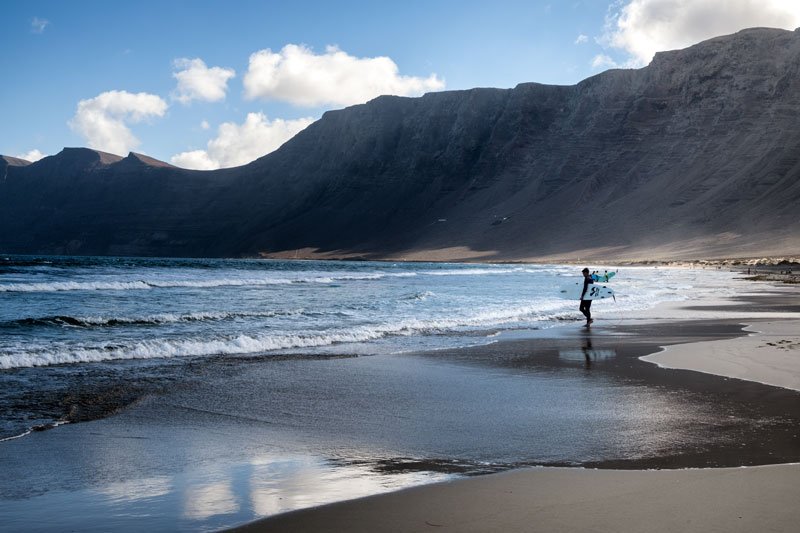
Famara Beach was one of the highlights of my week in Lanzarote.
Situated on the north-western coast of the island next to the village of Caleta de Famara, this is surfers’ Mecca.
Caleta de Famara has a bit of a frontier town feel and is home to single-storey whitewashed buildings, a few cafes and some surf schools.
But the real star is Famara beach, a glorious sweep of soft sand, studded with volcanic rocks, that hugs the face of a steep cliff. Watch instructors put the rookie surfers through their paces on the beach before they valiantly try to stay upright as they ride the waves.
14. Playa del Papagayo
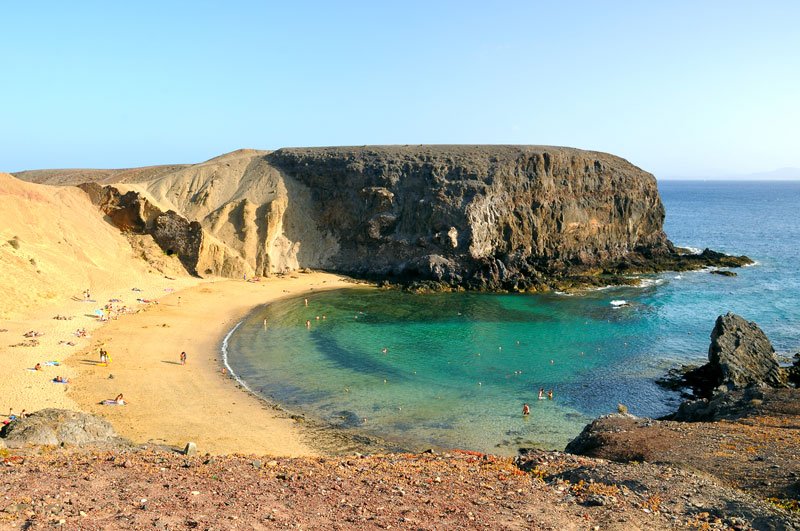
On the southeastern tip of the island, Papagayo is one of the most famous beaches in Lanzarote. This small shell-shaped cove has a crescent of sand and crystal-clear water.
Make the most of your visit to Playa del Papagayo with a half-day boat tour.
15. Isla Graciosa
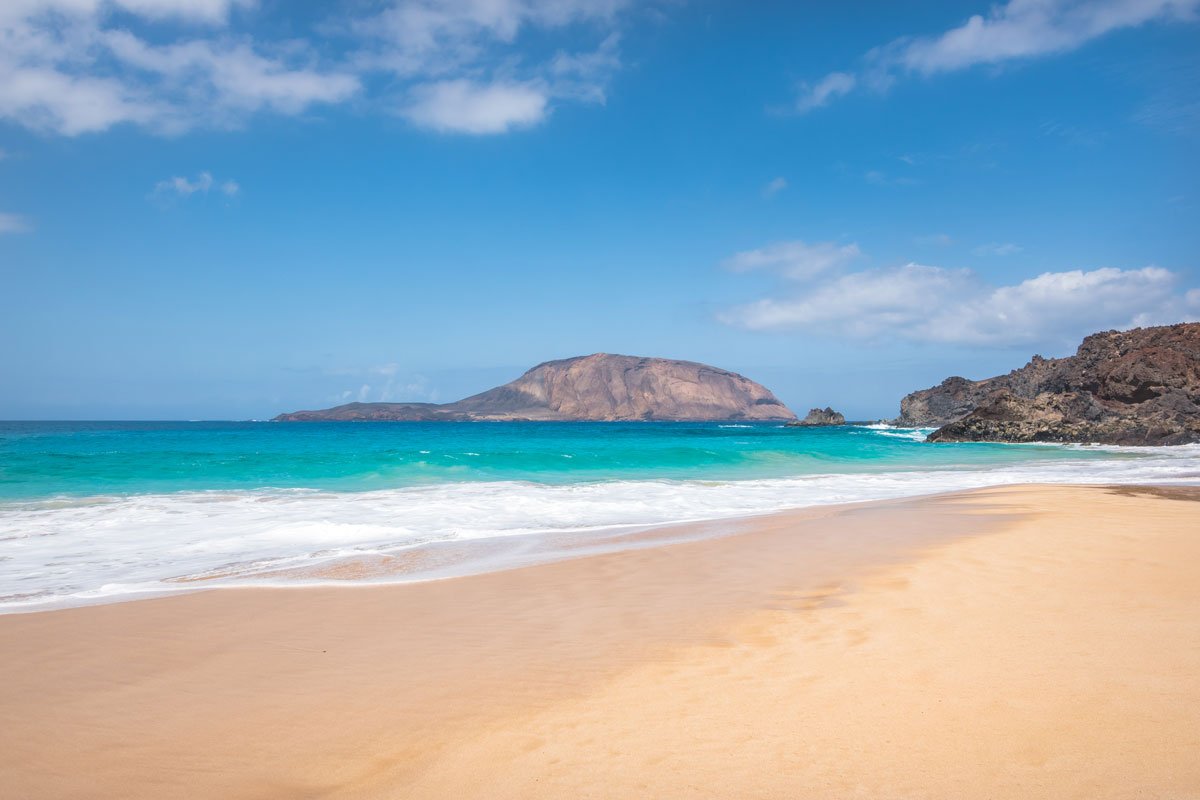
Take a 20-minute boat trip from Orzola to enter another world. Forming part of the protected Parque Natural del Archipélago Chinijo, La Graciosa is home to around 700 souls and has only one settlement, Caleta del Sebo.
With the exception of a few Land Rovers, there are no cars and also no paved roads. To get around, hire a bike from one of the outlets at the harbour or walk.
16. Puerto del Carmen
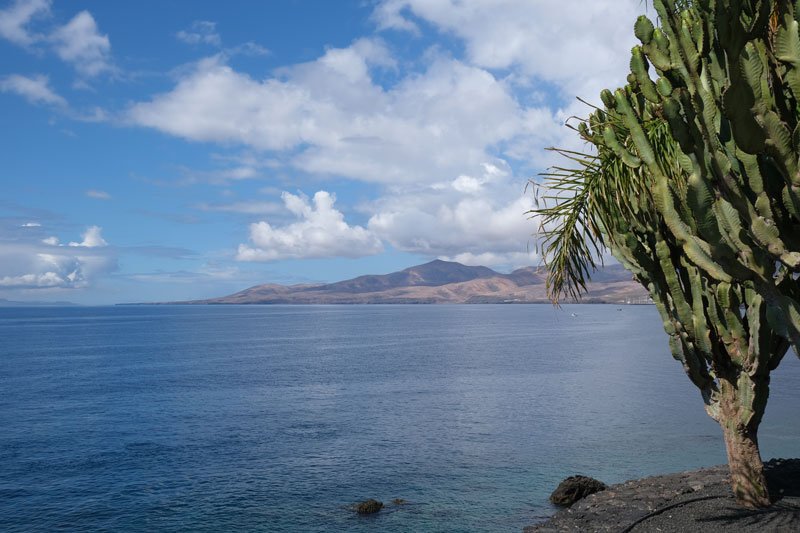
Located just three miles from the airport, Puerto del Carmen is Lanzarote’s biggest resort town. Its beaches – Playa Grande, Playa de los Pocillos and Playa Matagorda – are splendid.
It has retained a fragment of its roots as a humble fishing village in the whitewashed shape of Nuestra Señora del Carmen.
17. Playa Blanca
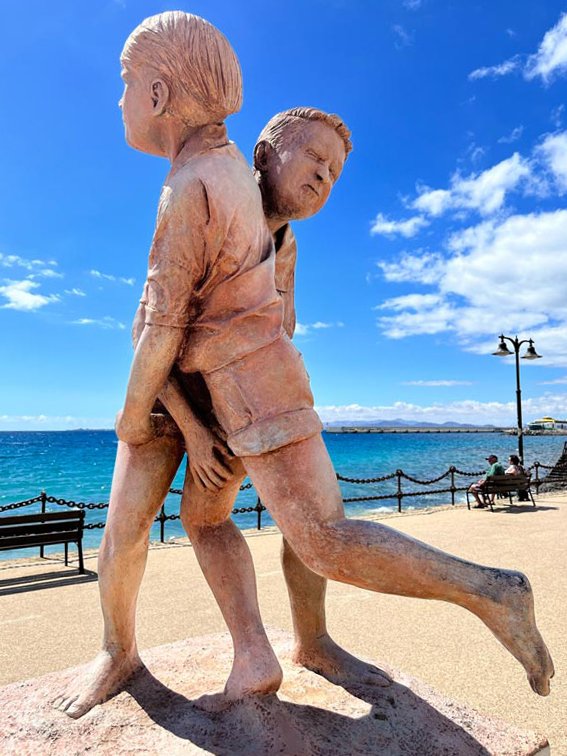
Playa Blanca, also a former fishing village, is the most upmarket of Lanzarote’s resort towns.
A pleasant tree-lined promenade links the soft sands of Playa Dorada and Playa Blanca to the port. West of the port, another promenade takes you to pretty Playa Flamingo
18. Costa Teguise
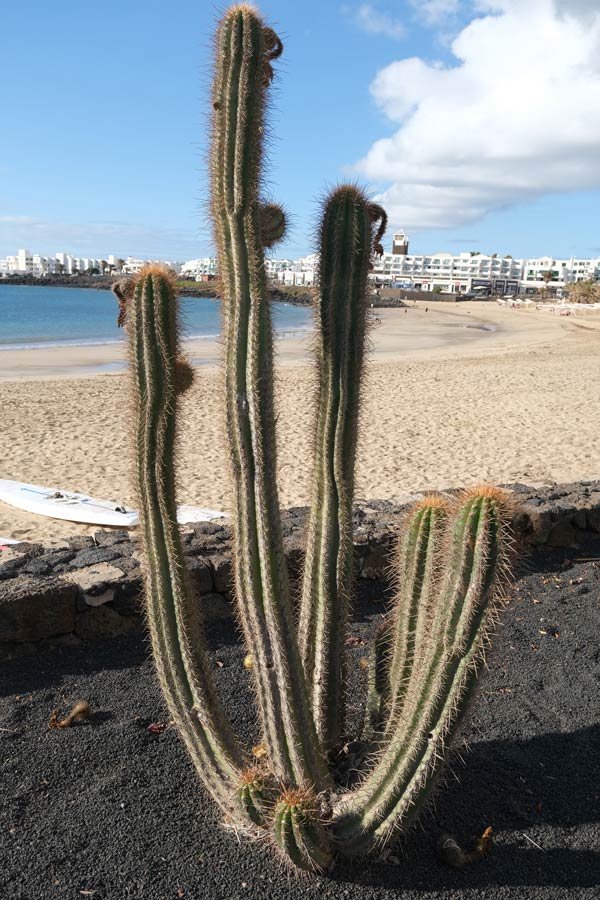
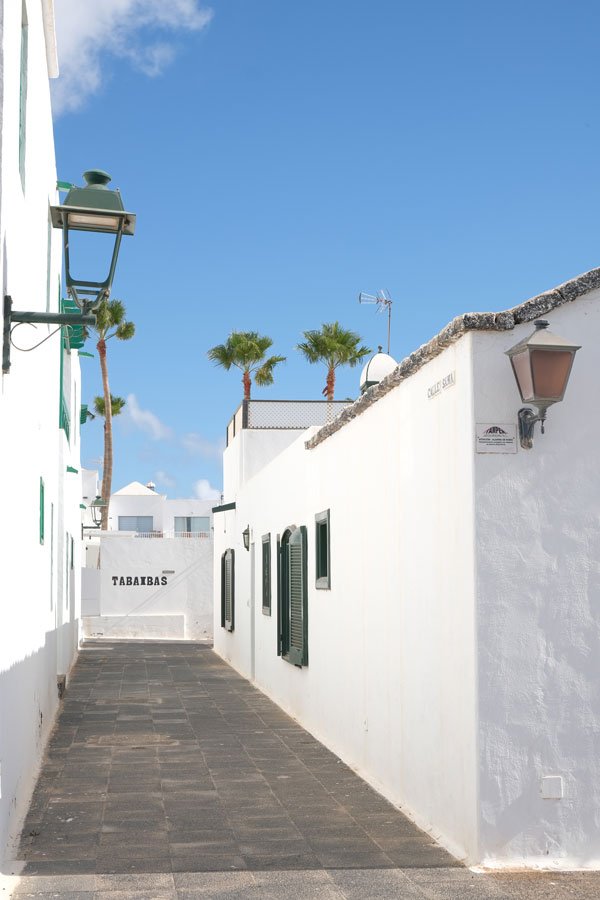
Not to be confused with the more charming colonial town, this resort town has a more laid-back feel than either Playa Blanca or Puerto del Carmen. Thanks to its central location, it is an excellent base for exploring Lanzarote, particularly if you are not hiring a car.
There is a lovely promenade that links the resort’s three main beaches – Playa de los Charcos, Playa de las Cucharas and Playa de Jabilio. César Manrique was responsible for the Pueblo Marinero at the southern end of town and the lush indoor gardens of Hotel Meliá Salinas.
Planning Your 7 Days in Lanzarote
when to visit
With around 300 days of sunshine annually, Lanzarote is a year-round destination.
You are looking at an annual average temperature of 20 degrees, soaring to 30 degrees in the summer months. However, the worst of the heat is moderated by cooling trade winds
Northern Europeans flock there in the winter months to escape the frosty mornings back home.
On balance, spring or autumn (fall) are good times to visit Lanzarote.
You have a greater chance of seeing rain if you visit between November and February.
To save money on accommodation, avoid visiting during school holidays, particularly at Easter and Christmas. The least busy month for tourism in Lanzarote is November.
How to get to Lanzarote
By plane
There are direct flights to Lanzarote from Spain and other European cities. Planes land at César Manrique-Lanzarote Airport (ACE), also known as Arrecife Airport.
By boat
There are regular services between Playa Blanca in Lanzarote and Corralejo on Fuerteventura. There are also ferry services from Las Palmas de Gran Canaria.
From mainland Spain, there are weekly crossings from the ports of Huelva and Cádiz to Arrecife.
Lanzarote is also a popular port of call for cruise ships.
Getting around Lanzarote
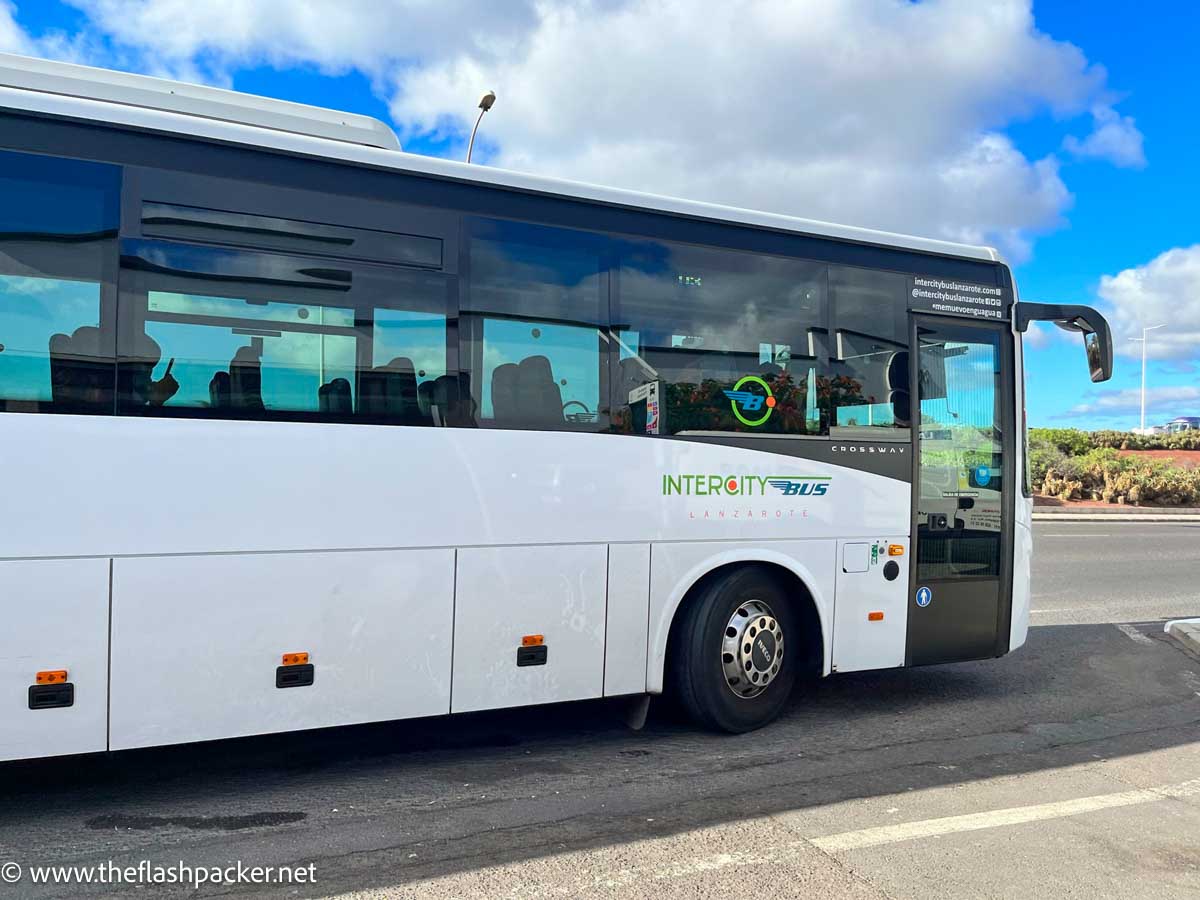
Whilst hiring a car gives you the most flexibility, it’s not for everyone. It’s certainly not for me.
Instead, leave your driver’s licence at home and take the bus.
Thanks to cheap fares and an extensive network, exploring Lanzarote by bus is a breeze. What you lose in flexibility you gain in downtime, watching the island’s extraordinary landscape unfurl from the comfort of your window seat.
For the few places in Lanzarote that buses do not reach – Timanfaya National Park is a good example – join one of the inexpensive day tours. These are also excellent ways for solo travellers to meet other people.
Where to Stay
So where is the best place to base yourself for a week in Lanzarote, especially if you are not hiring a car? Ultimately, where you stay in Lanzarote will depend on your itinerary whilst on the island.
Bucket-and-spade package tourists descend on the two bigger resorts in the south: Playa Blanca and Puerto del Carmen.
To explore the more interesting places in the northeast of the island by public transport, pick Costa Teguise, the smaller and more restrained of the three tourist resort towns, or Arrecife, Lanzarote’s capital.
Costa Teguise
Hotel HD Beach Resort & Spa
I stayed at this 4-star resort at the quieter end of town. There are uninterrupted sea views and pools-a-plenty, and I was lucky to be upgraded to a swish duplex suite.
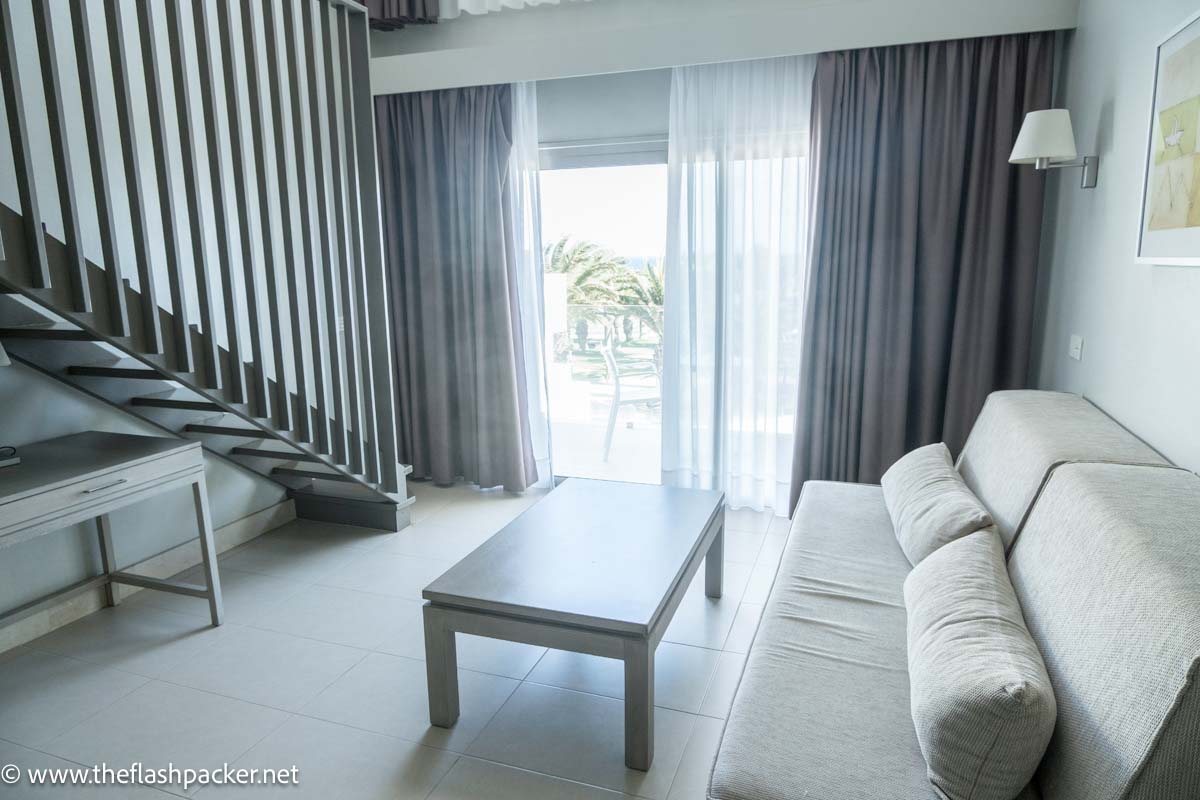
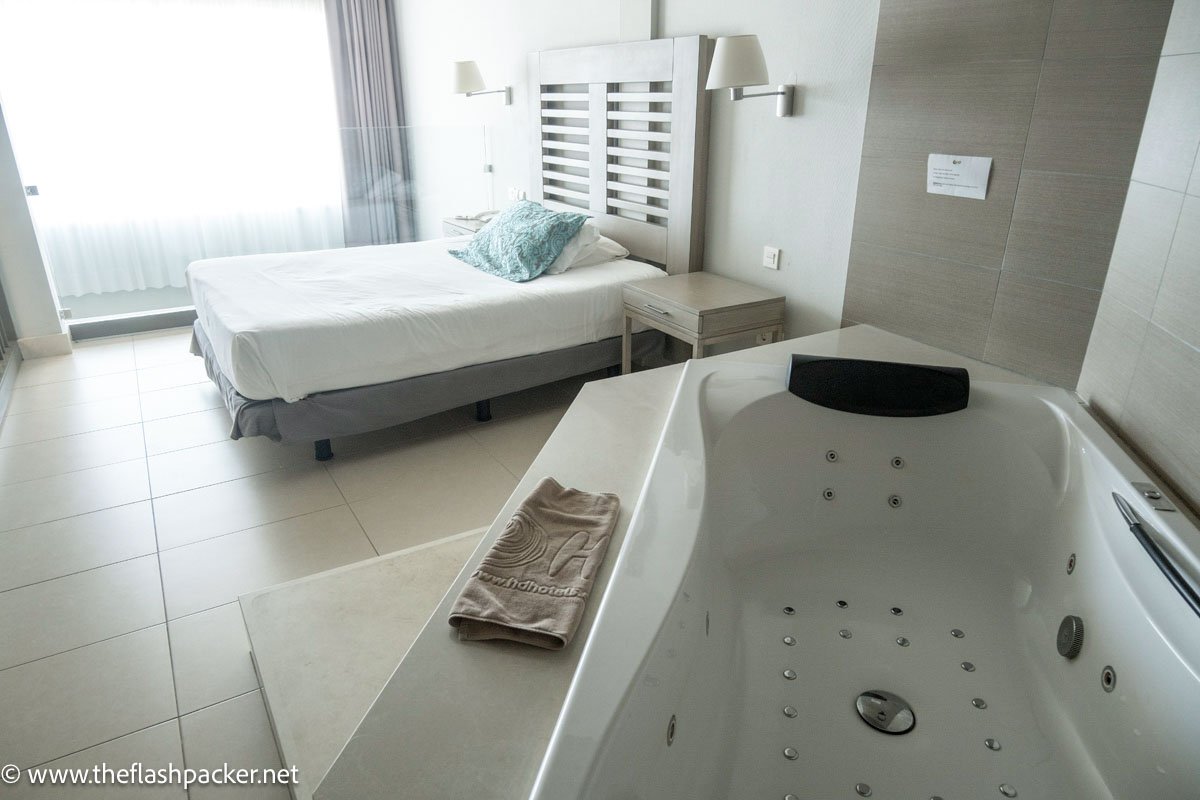
>>> CLICK HERE FOR MORE INFORMATION
Here are a few alternatives that I have found that may suit other tastes and budgets:
Paradisus by Meliá Salinas Lanzarote
Hotel HD Beach Resort’s next-door neighbour, this lovely hotel is famous for its interior garden designed by César Manrique.
>>> CLICK HERE FOR MORE INFORMATION
Apartamento recién reformado en la playa de Las Cucharas
This modern apartment close to the beach has a sun terrace, washing machine and daily housekeeping, and has excellent reviews
>>> CLICK HERE FOR MORE INFORMATION
Arrecife
If I was to visit Lanzarote again, I would be very tempted to stay in Arrecife. Although this is the island’s busy capital, it has lots of character, a lovely beach and is unbeatable in terms of bus connections across the island.
Here are a few places that I have found that are worth a closer look:
5***** Charco loft
This huge apartment is in an excellent location, has views to die for and excellent reviews.
>>> CLICK HERE FOR MORE INFORMATION
Arrecife Gran Hotel & Spa
Next to Arrecife’s lovely El Reducto Beach, this 5-star hotel offers a spa and panoramic views.
>>> CLICK HERE FOR MORE INFORMATION
My Top Lanzarote Travel Tips
And that’s a wrap. Which of these fabulous places in Lanzarote will be on your shortlist?
I’ll leave you with a few final Lanzarote travel tips to make your holiday go with a swing.
Finally, if you’ve found this article helpful, check out my other Lanzarote destination guides:
- Lanzarote Solo Travel: The Ultimate Guide
- Exploring Lanzarote by Bus: Tips, Popular Routes and Fares
- 10 Fabulous Things to Do in Arrecife, Lanzarote
- How to Visit the Cactus Garden, Lanzarote
- 5 Reasons to Visit Famara, Lanzarote: The Hawaii of Europe

About Bridget
Bridget Coleman has been a passionate traveller for more than 30 years. She has visited 70+ countries, most as a solo traveller.
Articles on this site reflect her first-hand experiences.
To get in touch, email her at hello@theflashpacker.net or follow her on social media.
